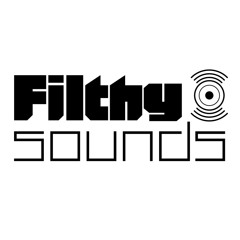
The world of music production is constantly evolving, with new trends and techniques emerging all the time. One trend that has gained significant traction in recent years is “filthy” music production. This style is characterized by gritty textures, raw energy, and a sense of unpolished authenticity. It’s a sound that often evokes nostalgia for classic hip-hop and electronic music, while simultaneously pushing boundaries with modern production techniques.
This article will delve into the world of “filthy” music production, exploring the techniques used to achieve this unique sound. We’ll examine the importance of gritty sounds and textures, and we’ll also discuss the role of “producer tags” in establishing authenticity and recognition within the music community. By the end of this article, you’ll have a better understanding of how to incorporate these elements into your own productions and create tracks that stand out from the crowd.
Filthy Music Production Techniques
Achieving a “filthy” sound isn’t about simply making things sound bad; it’s about embracing imperfections and using them to create a unique sonic character. Several techniques can be employed to achieve this effect:
- Saturation: Overdriving audio signals with saturation plugins can add warmth, grit, and harmonic distortion, giving tracks a more aggressive and “in-your-face” quality. Experiment with different types of saturation, from subtle tape emulation to extreme distortion, to find the sweet spot for your desired sound.
- Lo-Fi Processing: Introduce elements of lo-fi aesthetics by using techniques like vinyl crackle simulation, tape hiss, or bitcrushing. These effects add a sense of nostalgia and imperfection, reminiscent of classic recordings.
- Distortion & Fuzz: Don’t be afraid to push your audio through distortion and fuzz effects. Experiment with different types of distortion, from subtle overdrive to heavy fuzz, to create unique textures and sonic landscapes.
Gritty Sounds and Textures

The foundation of “filthy” music production lies in the use of gritty sounds and textures. These elements can be sourced from a variety of places:
- Sample Manipulation: Dig into sample libraries or record your own sounds and manipulate them creatively. Slice, dice, reverse, pitch-shift, and layer samples to create unique and unexpected textures.
- Synthesizer Sounds: Explore the vast sonic possibilities of synthesizers. Experiment with gritty waveforms, harsh filters, and aggressive modulation to generate sounds that are both powerful and unsettling.
- Field Recordings: Capture everyday sounds from your environment and use them as building blocks for your tracks. The imperfections and nuances of real-world recordings can add a layer of authenticity and depth to your music.
Producer Tags Explained
Producer tags are short audio snippets, often containing a unique vocal phrase or sound design, that identify a specific producer. They serve as a sonic signature, instantly recognizable to listeners familiar with the producer’s work.
The Purpose of Producer Tags
- Branding: Tags help producers establish their brand and create a consistent sonic identity across their tracks.
- Recognition: Listeners can quickly identify the producer behind a track, fostering a sense of familiarity and trust.
- Community Building: Tags connect producers with fans and other artists within the music community.
The Impact of Producer Tags on Authenticity

Producer tags can contribute to the authenticity of a track in several ways:
- Transparency: Tags clearly identify the creator behind the music, fostering transparency and accountability.
- Originality: Unique tags help producers stand out from the crowd and showcase their individual style.
- Connection: Tags create a sense of connection between the producer and the listener, as if they are sharing a secret code or inside joke.
Using Tags to Elevate Your Tracks
When incorporating producer tags into your tracks, consider these factors:
- Placement: Experiment with different placements for your tag – at the beginning, end, or within the track itself.
- Length & Style: Keep tags concise and memorable. Explore different vocal styles, sound design approaches, or even instrumental motifs to create a unique sonic signature.
- Context: Ensure that the tag complements the overall mood and style of your track.
Conclusion
“Filthy” music production is a powerful tool for creating tracks that are both sonically captivating and emotionally resonant. By embracing gritty textures, experimenting with unconventional techniques, and incorporating producer tags strategically, you can elevate your productions to new heights. Remember, “filthy” isn’t about being intentionally bad; it’s about pushing boundaries, exploring the imperfections, and crafting a sound that is uniquely yours.
